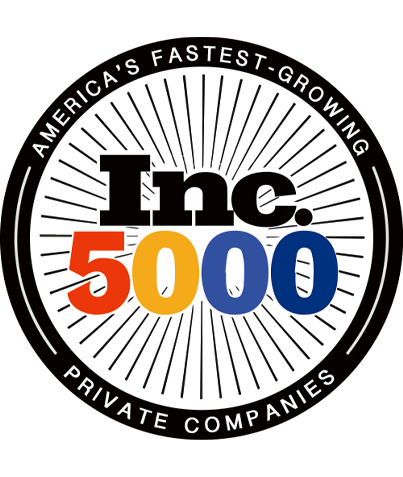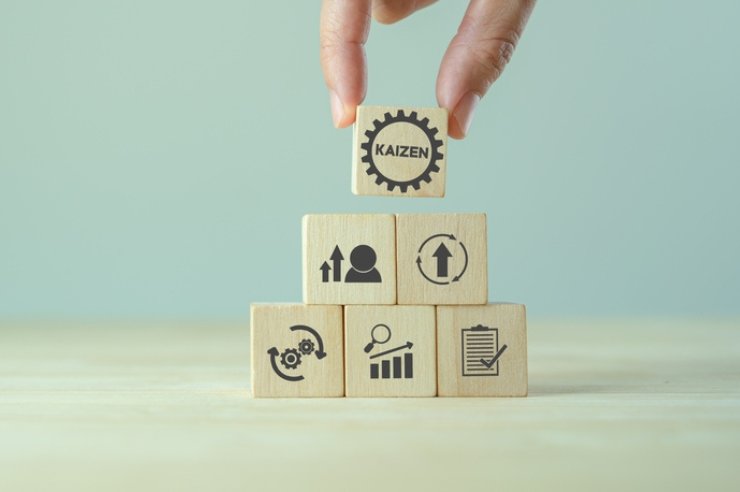Lean eCommerce, rooted in lean management principles, aims to maximize customer value while minimizing waste, ensuring that every process, from inventory management to customer engagement, is as efficient and value-driven as possible. We break down the key components of lean eCommerce, the seven steps to implement a lean eCommerce brand, and discuss the benefits of lean eCommerce.
What is Lean eCommerce?

Lean eCommerce is an innovative business strategy that adapts the lean management principles of maximizing value while minimizing waste, tailored specifically for eCommerce. It’s about creating more value for customers with fewer resources. This methodology focuses on understanding customer value, streamlining processes, and enhancing efficiency across all aspects of online business operations. By applying lean principles, eCommerce companies can significantly improve service quality, reduce costs, and increase customer satisfaction and loyalty.
Key Components of Lean Ecommerce
We will now break down the key components of lean eCommerce. Here are the primary components to be aware of:
- Customer-centric approach: Lean eCommerce revolves around deeply understanding and continuously meeting customer needs and preferences. It leverages data analytics to gain insights into customer behavior and tailors the shopping experience accordingly.
- Streamlined operations: Streamlined operations involve optimizing every aspect of the eCommerce supply chain, from inventory management and order fulfillment to shipping and returns. Techniques such as demand forecasting and just-in-time inventory are employed to ensure that resources are used efficiently.
- Continuous improvement: Lean eCommerce adopts a culture of Kaizen, or continuous improvement, where processes are consistently analyzed and refined. This dynamic approach allows businesses to remain agile and responsive to changing market trends and customer expectations.
- Waste reduction:By identifying and eliminating non-value-adding activities, lean eCommerce companies can reduce costs and improve operational efficiency, including physical waste and time and resources spent on unproductive activities.
- Technology and automation: Advanced technologies, including AI, machine learning, and automation tools, are crucial in enabling lean practices. They help streamline operations, provide personalized customer experiences, and make data-driven decisions.
By focusing on efficiency, customer value, and agility, companies can navigate the complexities of online commerce and emerge as leaders in their respective markets.
How To Implement a Lean eCommerce Brand in 7 Steps
We will now explain how to implement a lean eCommerce brand in 7 detailed steps.
1. Define Your Value Proposition
The first step in creating a lean eCommerce brand hinges on a deep understanding of customer’s needs and preferences.
Understand Customer Needs:
Lean eCommerce prioritizes delivering value from the customer’s perspective. By understanding customer needs, eCommerce businesses can ensure that every product, service, and process is designed to meet those needs efficiently, eliminating elements that do not add value from the customer’s viewpoint.
- Engage in Customer Research: Utilize qualitative and quantitative research methods to gather insights about your target audience. Tools like surveys, focus groups, and customer interviews can provide valuable information on what your customers value most to help improve retention rates. A study by Bain & Company highlights that increasing customer retention rates by 5% can increase profits by 25% to 95%.
- Analyze Customer Data: Use analytics tools to dive deep into customer data. Examine purchase history, website navigation patterns, and social media engagement to identify trends and preferences. This data can reveal what customers are looking for in products or services and highlight areas for improvement.
- Market Analysis: Conduct a thorough market analysis to understand the competitive landscape and identify gaps in the market that your eCommerce brand can fill. Tools like SEMrush and Google Trends can help you gauge market demand and competitor strategies.
- Customer Feedback: Regularly collect and analyze customer feedback through reviews, social media, and post-purchase surveys. This direct feedback is invaluable in understanding customer satisfaction and areas where your product or service could be enhanced.
- Persona Development: Create detailed customer personas based on your research. These personas should encapsulate your ideal customers’ characteristics, needs, and behavior patterns, serving as a reference point for tailoring your value proposition.
By synthesizing this information, businesses can craft a value proposition that resonates deeply with their target audience, promising a product or service and a solution to their specific needs and desires.
2. Streamline Your Operations
The next crucial step involves a meticulous examination of your entire supply chain to identify and rectify any inefficiencies, spanning from procurement to delivery.
Optimize the Supply Chain:
This process is essential for eliminating waste and enhancing the efficiency of resources across the board. Key strategies include:
- Demand Forecasting: Demand forecasting allows for smarter inventory management, reducing the costs associated with overstocking or stockouts. Tools like Google Analytics and specialized forecasting software (e.g., Forecast Pro and SAS Demand-Driven Forecasting) enable businesses to analyze historical sales data, customer behavior patterns, and market trends.
- Just-in-Time Inventory: Adopt a just-in-time (JIT) inventory system, which involves ordering and receiving goods only as they are needed in the production process. This strategy minimizes inventory costs and reduces waste, requiring precise supplier coordination.
- Supplier Relationships: Strengthen relationships with suppliers to ensure reliability and quality, which might involve negotiating better terms, improving communication channels, or diversifying your supplier base to reduce risk and improve supply chain resilience. Platforms like Jaggaer and SAP Ariba facilitate better communication, negotiation, and supplier collaboration.
- Process Optimization: Conduct a thorough analysis of all supply chain processes to identify bottlenecks or redundant steps that can be streamlined or automated. Comprehensive SCM solutions (e.g., Infor SCM, Blue Yonder) offer real-time visibility across the supply chain, from inventory levels to order status and delivery tracking.
- Sustainability Practices: Incorporate sustainable practices into your supply chain operations, such as using eco-friendly packaging or optimizing logistics to reduce carbon emissions, reducing environmental impact, but can also appeal to eco-conscious consumers and enhance your brand image. Software like Routific or OptimoRoute optimizes delivery routes to reduce fuel consumption and carbon emissions.
By systematically optimizing the supply chain through these focused actions, businesses can significantly reduce operational waste and improve overall efficiency, setting a solid foundation for a lean eCommerce operation.
Simplify Product Offerings:
An effective lean eCommerce strategy also involves a deliberate simplification of product offerings. This action is predicated on a detailed analysis of your product range to identify which items most closely align with customer needs and contribute significantly to business value. By concentrating on these high-value products, you can achieve several key benefits:
- Reduced Complexity: Tools like Zoho Inventory or Oracle NetSuite offer robust inventory tracking and management features, simplifying the process of monitoring stock levels, forecasting demand, and planning reorders for a streamlined product range. This simplicity can lead to more efficient procurement, stocking, and distribution processes.
- Lower Costs: A focused product range can significantly lower costs related to inventory storage, management, and wastage. With fewer products to handle, you can optimize inventory levels, reducing the need for extensive warehouse space and minimizing the risk of overstocking. Moreover, platforms such as WMS systems from Manhattan Associates or HighJump enable more efficient use of warehouse space and resources.
- Enhanced Marketing Effectiveness: Marketing efforts become more targeted and effective when you concentrate on promoting fewer, more relevant products. This focus allows for clearer messaging and better alignment with customer interests, leading to higher engagement and conversion rates.
- Improved Product Quality: Focusing on a narrower product range enables you to invest more in quality improvement and innovation for those products. This can enhance your brand’s reputation for quality and drive customer loyalty.
- Data-Driven Decision-Making: Use sales data, customer feedback, and market analysis to identify which products are most valued by your customers. Software like Tableau or Microsoft Power BI analyzes sales data to identify trends, best sellers, and underperformers, guiding decisions on which products to emphasize or phase out.
Businesses can create a more manageable, cost-effective, and customer-focused inventory by simplifying product offerings based on strategic analysis and customer feedback.
3. Embrace Technology and Automation

A pivotal element in advancing a lean eCommerce strategy is the adoption of modern technology and automation.
Leverage Cutting-edge Tools:
This step involves integrating state-of-the-art tools designed to automate mundane tasks and refine operational efficiency. By leveraging these technological advancements, businesses can achieve significant improvements in various areas:
- AI-Powered Customer Service: Implement AI chatbots like Intercom or Drift on your eCommerce platform to handle common customer inquiries, such as tracking orders or answering product questions, reducing response times and improving customer satisfaction while allowing your team to focus on more complex customer needs.
- Machine Learning for Demand Forecasting: Use machine learning tools, such as TensorFlow or IBM Watson, to analyze historical sales data and predict future demand trends. These predictions can help adjust inventory levels dynamically, avoiding overstock or stockouts and reducing storage costs.
- Enhanced eCommerce Platforms: Upgrade to eCommerce platforms that support automation and personalization, like Shopify Plus or Magento, which offer features for automated marketing, personalized shopping experiences based on user behavior, and streamlined checkout processes.
- Automated Inventory Management: Adopt inventory management software like Zoho Inventory or Cin7, which automatically updates stock levels across multiple sales channels in real-time, triggers reorder alerts for low stock items, and provides detailed inventory reports to optimize stock levels.
- Efficient Order Processing: Use order management systems such as Orderhive or Brightpearl to automate the order-to-fulfillment process, ensuring orders are processed quickly and accurately. These systems can integrate with your inventory management and shipping providers, automating tasks from order receipt to delivery.
- Logistics and Shipping Automation: Implement logistics software like ShipStation or Flexport to automate shipping processes, including label printing, carrier selection based on rates and delivery times, and tracking shipments, reducing shipping costs and improving delivery times, enhancing the customer experience.
By embracing technology and automation, lean eCommerce businesses can significantly enhance operational efficiency, improve customer experiences, and make informed decisions based on data insights. This strategic integration of technology supports lean management principles by reducing waste and maximizing value and positions companies to stay competitive.
4. Foster a Culture of Continuous Improvement
Fostering a culture of continuous improvement is indispensable to truly embody a lean eCommerce approach.
Implement Kaizen:
Continuous improvement involves embracing the Japanese concept of Kaizen, which signifies the philosophy of making small, incremental changes for the better. Here’s how to operationalize this principle within your organization:
- Embed Continuous Improvement in Company Values: Make continuous improvement a core part of your company’s values and operational ethos, which can be initiated through leadership by setting examples, sharing success stories of improvements, and recognizing team contributions to a culture of enhancement and innovation.
- Regular Feedback Loops: Establish mechanisms for constant feedback from all stakeholders, including employees, customers, and suppliers. Tools like Slack for internal communication, SurveyMonkey for customer feedback, and regular supplier reviews can facilitate open dialogues for suggestions and concerns, allowing for real-time insights into potential improvements.
- Process Evaluation and Refinement: Implement a structured approach to evaluate and refine processes continuously. Use methodologies like the PDCA (Plan-Do-Check-Act) cycle to systematically test and implement process changes. Software tools such as Asana or Trello can be used to track progress on improvement initiatives, ensuring that actions are taken based on feedback and evaluations.
- Training and Development: Invest in training programs that equip employees with the skills and mindset needed for continuous improvement. Workshops on lean management, problem-solving techniques, and data analysis can empower employees to identify inefficiencies and propose solutions.
- Innovation Encouragement: Create an environment that encourages innovation and experimentation. Establish a fund or dedicate time for employees to work on projects that explore new ideas or improvements, even if they fall outside their regular responsibilities. Google’s famous “20% time” policy is a prime example of how allowing employees to explore new ideas can lead to significant innovations.
- Performance Metrics for Continuous Improvement: Set up specific KPIs related to continuous improvement efforts, such as the number of improvements implemented, the reduction in waste, or improvements in customer satisfaction scores. Tools like Looker Studio can be used to create dashboards that track these KPIs, making the impact of continuous improvement efforts visible and quantifiable.
By systematically fostering a culture of continuous improvement through these actions, businesses can ensure that their operations remain dynamically aligned with the principles of lean eCommerce, which not only enhances operational efficiency and customer satisfaction but also drives a culture of empowerment and innovation within the organization.
5. Eliminate Waste
Incorporating waste elimination into your lean eCommerce strategy is crucial for optimizing efficiency and enhancing value.
Identify Non-value-adding Activities:
This step focuses on identifying and removing non-value-adding activities across your operations. Here’s a detailed approach to systematically eliminate waste:
- Waste Identification Workshops: Organize workshops with teams across different departments to map out current processes and identify areas of waste. Use techniques like value stream mapping to visually represent the flow of materials and information, highlighting any redundant or non-value-adding steps.
- Inventory Analysis: Utilize inventory management software, such as Fishbowl or Netsuite, to analyze inventory levels and identify excess stock that ties up capital and space. Implementing a just-in-time (JIT) inventory system can help minimize excess inventory and reduce storage costs.
- Supply Chain Optimization: Review your supply chain for inefficiencies, using tools like SCM software (e.g., SAP SCM or Oracle SCM Cloud) to track and analyze supply chain performance. Look for bottlenecks, excessive transportation costs, or supplier issues that contribute to delays or waste.
- Marketing Performance Audit: Conduct audits of your marketing strategies using analytics tools like Google Analytics or HubSpot. Evaluate the ROI of different campaigns and channels to identify underperforming strategies that are not contributing to customer acquisition or retention.
- Process Automation: Identify manual processes that are time-consuming and prone to errors. Invest in automation tools, such as robotic process automation (RPA) software like UiPath or Automation Anywhere, to streamline these processes and reduce the waste associated with manual errors and inefficiencies.
- Feedback and Improvement System: Create a system for employees to easily report observations of waste and suggest improvements. This could be a digital suggestion box or regular innovation meetings. Encourage participation by recognizing and rewarding contributions to waste reduction.
By following these steps to identify and eliminate waste, businesses can significantly streamline their operations, reduce costs, and improve overall efficiency, supporting the lean eCommerce objective of maximizing value and fostering a proactive culture of continuous improvement within the organization.
6. Focus on Customer Experience
To excel in a lean eCommerce environment, prioritizing customer experience is essential.
Enhance Personalization and Service:
This step goes beyond operational efficiency to directly impact how customers interact with and perceive your brand. Here’s how to enhance personalization and service:
- Leverage Customer Data for Personalization: ollect and analyze customer data using analytics tools like Google Analytics and CRM systems such as Salesforce or HubSpot. This data enables you to understand customer behaviors, preferences, and purchase history, allowing you to make personalized product recommendations and send tailored marketing messages. Implementing personalization algorithms on your eCommerce platform can dynamically adjust content, offers, and recommendations based on individual user profiles.
- Segmentation for Targeted Marketing: Use segmentation tools within email marketing platforms like Mailchimp or marketing automation platforms like Marketo to categorize your customers into distinct groups based on their behaviors, interests, and purchase history, enabling you to send highly targeted and relevant marketing campaigns, increasing engagement and conversion rates.
- Optimize the Online Shopping Experience: Enhance your eCommerce site’s usability and design by employing user experience (UX) design principles. Tools like Hotjar or Crazy Egg can provide heatmaps, session recordings, and user feedback, offering insights into how users interact with your site. Based on these insights, you can make data-driven adjustments to improve navigation, speed up checkout processes, and make the site more responsive across devices.
- Responsive and Efficient Customer Service: Implement customer service platforms like Zendesk or Freshdesk to centralize customer inquiries from various channels and ensure timely and consistent responses. Consider integrating AI chatbots to provide instant support for common queries and using live chat services for more complex issues, enhancing responsiveness and reducing wait times.
- Collect and Act on Customer Feedback: Regularly gather customer feedback through surveys, social media listening, and review platforms like Trustpilot. Analyze this feedback to identify areas for improvement in your product offerings, shopping experience, or customer service. Acting on this feedback not only improves the customer experience but also demonstrates to customers that their opinions are valued and taken seriously.
By focusing on these specific strategies to enhance personalization and service, businesses can significantly improve the customer experience. This focus not only meets the lean eCommerce goal of maximizing value but also builds customer trust and loyalty, which are crucial for long-term success in the competitive eCommerce landscape.
7. Measure and Adjust

It’s imperative to establish, measure, and adjust based on Key Performance Indicators (KPIs) to ensure the ongoing effectiveness of a lean eCommerce strategy.
Use Key Performance Indicators (KPIs):
This final step involves a cycle of evaluation and refinement to continually align business operations with strategic objectives. Here’s how to effectively implement this step:
- Identify Relevant KPIs: Start by determining which KPIs are most relevant to your lean eCommerce objectives. Common eCommerce KPIs include conversion rate, average order value, customer lifetime value, cart abandonment rate, and customer satisfaction scores. Additionally, incorporate lean-specific KPIs such as inventory turnover rate, order fulfillment times, and the rate of return due to defects.
- Utilize Analytics Tools: Leverage analytics tools like Google Analytics for website performance, Klaviyo or Looker Studio for marketing analytics, and inventory management software for supply chain insights. These tools can track your chosen KPIs in real time, providing valuable data to inform decision-making.
- Dashboard Creation for Real-time Monitoring: Create dashboards using platforms like Tableau, Power BI, or Looker Studio to visualize KPIs in a comprehensible and actionable format. Dashboards allow for at-a-glance monitoring of performance against targets, enabling quick identification of trends and deviations.
- Regular Review Sessions: Schedule regular review sessions (e.g., monthly or quarterly) to assess KPI performance. These sessions should involve key stakeholders across departments to ensure a comprehensive analysis of data and foster a collaborative approach to addressing any issues.
- Implement a Feedback Loop: Develop a structured feedback loop where insights from KPI analysis are used to inform operational adjustments, which could involve optimizing marketing campaigns, revising inventory levels, or implementing new customer service protocols to address areas where KPIs indicate underperformance.
- Agile Adjustment Process: Embrace an agile approach to making adjustments based on KPI insights, meaning being prepared to test new strategies, adopt technological innovations, or pivot operations in response to KPI analysis. The agility to adjust tactics swiftly is crucial in the dynamic eCommerce landscape.
- Continuous Learning and Improvement: Use KPI analysis not just for operational adjustments but also for strategic learning. Understanding the reasons behind KPI performance can provide deep insights into customer behavior, market trends, and internal process efficiencies, guiding broader strategic decisions.
Lean eCommerce operations can maintain a competitive edge by meticulously measuring performance against well-defined KPIs and being prepared to make data-driven adjustments. This cycle of measurement and adjustment ensures that the business remains responsive to changing market conditions, customer needs, and operational challenges, driving continuous improvement and growth.
Benefits of Lean eCommerce
The adoption of lean principles in eCommerce operations brings forth a multitude of advantages that can revolutionize the way businesses operate online. Lean eCommerce, by design, focuses on creating more value for customers with fewer resources, leading to a highly efficient and customer-centric business model. Below are the many benefits derived from implementing lean strategies in eCommerce, based on principles and outcomes observed in practice:
Enhanced Customer Experience
- Personalization and Responsiveness: Lean eCommerce strategies leverage deep insights into customer behavior to offer personalized shopping experiences, leading to higher engagement rates and customer satisfaction as businesses can swiftly respond to customer needs and preferences. In fact, 61% of people expect brands to customize experiences based on their preferences.
- Improved Service Quality: By focusing on value-adding activities and reducing waste, companies can offer faster and more reliable services, from quicker website performance to faster delivery times.
Increased Operational Efficiency
- Streamlined Processes: Lean practices help identify and eliminate unnecessary steps in operations, from inventory management to order fulfillment. This streamlining results in more efficient use of resources and a reduction in costs associated with excess inventory and wasted time. Carrying costs, for example, often total up to 30% of the total inventory value.
- Automation of Routine Tasks: Implementing automation in areas like customer service (through AI chatbots) and inventory management reduces manual effort, allowing businesses to allocate their resources more effectively.
Cost Reduction
- Lower Inventory Costs: Lean inventory management techniques, such as just-in-time inventory, significantly reduce holding costs by ensuring that stock levels closely match demand.
- Efficient Use of Marketing Budgets: Data-driven marketing strategies ensure that marketing spend is targeted and effective, eliminating waste on unproductive campaigns.
Improved Flexibility and Scalability
- Quick Adaptation to Market Changes: A lean approach enhances a business’s ability to respond quickly to market changes and customer feedback, allowing for rapid adjustments to products, services, and marketing strategies.
- Easier Scalability: Lean eCommerce operations can scale up or down without proportionally increasing costs, thanks to efficient processes and a strong focus on what generates value.
Higher Quality and Innovation
- Continuous Improvement: The Kaizen principle encourages ongoing refinement of products and services, leading to higher quality offerings and increased customer satisfaction.
- Fostering Innovation: A lean environment, with its emphasis on value and continuous improvement, naturally fosters innovation, as it encourages looking for better ways to meet customer needs.
Sustainability and Environmental Impact
- Reduced Waste: Lean eCommerce inherently focuses on reducing waste, not just in terms of inventory but also in minimizing the environmental impact of operations, contributing to more sustainable business practices.
- Energy Efficiency: Streamlined operations and optimized logistics can lead to lower energy consumption, further enhancing the environmental benefits of lean eCommerce.
Enhanced Employee Engagement and Productivity
- Employee Empowerment: Lean eCommerce models often empower employees by involving them in the process of continuous improvement, leading to higher engagement and job satisfaction. Importantly, companies with a highly engaged workforce report being 21% more profitable.
- Increased Productivity: With clear focus and streamlined processes, employees can achieve higher productivity levels, contributing to the overall efficiency and effectiveness of the business.
Lean eCommerce not only drives efficiency and cost savings but also significantly enhances the customer experience, fosters innovation, and promotes sustainability. By adopting lean principles, eCommerce businesses position themselves to thrive in the competitive digital marketplace, delivering value that benefits customers, employees, and the environment alike.
Work With the Experts
Adopting lean eCommerce strategies signifies a forward-thinking approach to business. It’s a commitment to delivering exceptional value, streamlining operations, and fostering sustainable growth.
At Oyova, we understand the transformative potential of lean eCommerce. Our expertise in Shopify development services is grounded in the core tenets of lean methodologies—maximizing customer value while minimizing waste. We’re dedicated to crafting solutions that not only meet but anticipate the needs of our clients, offering them a competitive edge in a crowded marketplace.
The advantages of partnering with Oyova for your Shopify development needs are clear. Through our focused approach, we deliver streamlined, efficient, and highly responsive eCommerce platforms. Our strategies are designed to enhance your customer’s experience, boost operational efficiency, and drive down costs, ensuring your business thrives in the digital age.
Take a proactive step towards redefining your online presence with Oyova’s Shopify development services. Reach out to us today to find out how we can assist you in unlocking the full potential of your online business.
Our Awards













